
Barcelona, a city renowned for its vibrant culture and stunning architecture, is home to one of the most remarkable landmarks in the world: the Sagrada Familia. This iconic basilica, designed by the visionary architect Antoni Gaudí, attracts millions of visitors each year, eager to witness its intricate details and breathtaking beauty.
As you explore the wonders of this architectural masterpiece, you'll understand why it holds a special place in the hearts of both locals and tourists alike. Join us as we delve into the unique features and history of this magnificent structure, and Discover the Magnificence of Sagrada Familia: The Iconic Landmark of Barcelona, Spain! | Barcelona Turisme.
Discover the Architectural Brilliance of Sagrada Familia: A UNESCO World Heritage Site
The Sagrada Familia is not just a church; it is a testament to architectural innovation and a marvel of engineering. Designed by Antoni Gaudí, it incorporates elements of Gothic and Art Nouveau styles, showcasing an extraordinary blend of nature and geometry. This iconic structure features soaring towers and intricate facades, each telling a unique story that reflects Gaudí's deep religious faith and passion for nature.
Recognized as a UNESCO World Heritage Site, the Sagrada Familia is celebrated for its unique construction techniques. Gaudí utilized methods such as hyperboloids and catenary arches, which allow for the seamless integration of light and space within the basilica. Visitors are often captivated by the stained glass windows that create a kaleidoscope of colors, enhancing the spiritual experience within the sacred walls.
When exploring the Sagrada Familia, here are some key features to take note of:
- Towers: Once completed, it will have 18 towers representing the apostles, the Virgin Mary, and Jesus Christ.
- Nativity and Passion Facades: Each facade narrates distinct parts of Christ's life, showcasing Gaudí's unique approach to storytelling through architecture.
- Interior Design: The interior resembles a forest with tree-like columns, creating a serene and organic atmosphere.
The ongoing construction of the Sagrada Familia, which began in 1882, is a symbol of perseverance and creativity. It remains a work in progress, yet it continually attracts millions, who come to witness its evolving beauty and learn about Gaudí's visionary approach. This basilica stands as a beacon of architectural brilliance, merging art with spirituality in a way that few other structures can.
Exploring the Symbolism Behind Sagrada Familia's Unique Design Features
The Sagrada Familia is a masterclass in architectural symbolism, where every design element carries profound meaning. For Antoni Gaudí, nature was a primary source of inspiration, reflected in the basilica's organic shapes and forms. The tree-like columns within the interior not only support the structure but also evoke a sense of being in a serene forest, symbolizing life and growth.
One of the most striking features of the Sagrada Familia is its three grand facades, each representing significant aspects of Christ's life: the Nativity, the Passion, and the Glory. The Nativity Facade celebrates the birth of Christ with intricate carvings of flora and fauna, while the Passion Facade starkly contrasts with its angular shapes, depicting the suffering of Jesus. Lastly, the Glory Facade, still under construction, aims to illustrate the resurrection and the glory of Christ.
Gaudí’s use of light within the Sagrada Familia also serves a symbolic purpose. The stained glass windows are strategically placed to cast colorful reflections, representing divine light and spirituality. As sunlight streams through, it creates a vibrant atmosphere that transforms throughout the day, embodying the passage of time and the ever-changing nature of life.
Moreover, the basilica's 18 towers are not just architectural feats; they symbolize the twelve apostles, the Virgin Mary, and Jesus Christ, embodying Gaudí’s vision of a heavenly Jerusalem. This intricate layering of meaning reflects the deep spirituality that underpins the Sagrada Familia, making it not just a building but a profound representation of faith and devotion.
The History of Sagrada Familia: From Vision to Iconic Landmark
The Sagrada Familia's history began in 1882, driven by the vision of architect Francisco de Paula del Villar, who initially led the project. However, in 1883, the renowned Antoni Gaudí took over the design, infusing the basilica with his unique style and deep spiritual insights. Gaudí's commitment transformed the Sagrada Familia into a living representation of his artistic and religious beliefs, making it a symbol of Barcelona.
Throughout the years, the construction faced numerous challenges, including financial constraints and the Spanish Civil War, which halted progress for several years. Despite these setbacks, the project continued, evolving with the techniques and technologies of each era. Today, the completion of the Sagrada Familia is anticipated to be in the coming years, symbolizing resilience and dedication to Gaudí's original vision.
Key milestones in the Sagrada Familia's history include:
- 1882: Foundation laid under Francisco de Paula del Villar.
- 1883: Antoni Gaudí becomes the chief architect.
- 1936: Construction interrupted by the Spanish Civil War.
- 2026: Expected completion date, marking the centenary of Gaudí's death.
The Sagrada Familia has transformed from a mere construction project into an iconic landmark and a UNESCO World Heritage Site. Its intricate designs and profound symbolism reflect the evolution of architectural thought and the enduring legacy of Antoni Gaudí. Today, it stands as a testament to human creativity, faith, and the passage of time, drawing millions to Barcelona to witness its ongoing grandeur.
Why Sagrada Familia Is a Must-Visit Attraction in Barcelona, Spain
Visiting the Sagrada Familia is an experience that transcends mere tourism; it is a journey through the visionary mind of Antoni Gaudí. His unparalleled approach to architecture merges spirituality with nature, creating a space that resonates deeply with visitors. The basilica’s intricate designs and towering spires invite exploration, making every corner a discovery of artistry and faith. This makes the Sagrada Familia a must-visit attraction for anyone traveling to Barcelona.
The basilica's ongoing construction is a testament to Gaudí's original vision and the dedication of countless artisans. As work progresses, each visit offers something new, allowing guests to witness the transformation of this architectural marvel. The annual increase in visitors serves as proof of its magnetic allure, drawing art lovers, pilgrims, and curious travelers alike to appreciate its beauty in various stages of completion.
Moreover, the Sagrada Familia serves as a cultural touchstone for Barcelona, embodying the city’s rich history and artistic heritage. The basilica is not just a religious site; it is a symbol of perseverance and creativity that reflects the spirit of Catalonia. Visitors can engage in guided tours, which provide invaluable insights into the intricate details and stories embedded within the structure, enhancing their overall experience.
In addition to its architectural significance, the Sagrada Familia offers a variety of experiences for visitors. From attending mass to appreciating the vibrant atmosphere created by the stained glass windows, there are numerous ways to connect with this iconic landmark. Each visit can be a personal journey, making it an essential stop on any itinerary in Barcelona.
Understanding the Spiritual Significance of Sagrada Familia's Colors and Shapes
The Sagrada Familia is not only an architectural marvel but also a profound spiritual statement, seamlessly woven into its colors and shapes. Gaudí's choice of vibrant hues reflects the light of the divine, creating an ethereal atmosphere within the basilica. Each color in the stained glass windows serves a purpose, illuminating spaces with varying intensity throughout the day, symbolizing the divine presence in the world and the cycle of life.
Furthermore, the shapes of the Sagrada Familia have significant spiritual implications. The organic forms mimic nature, emphasizing the connection between the earth and the divine. The spiral towers, for instance, are designed to reach towards the heavens, representing the aspiration of humanity to connect with God. This architectural approach not only enhances the aesthetic appeal but also fosters a sense of transcendence among visitors.
In addition, the basilica's interior design features natural elements that evoke a forest-like environment. The tree-like columns symbolize growth and life, reinforcing the theme of spirituality rooted in nature. This interplay of shapes and colors encourages reflection and meditation, making the Sagrada Familia a sacred space where art and faith converge.
To further understand the spiritual significance of these elements, one can consider the following aspects:
- Colors: Each color represents different facets of spirituality, with warm tones symbolizing divine love and cool tones reflecting peace.
- Shapes: Organic forms are designed to inspire awe and reverence, ensuring that every visitor feels a connection to the sacred.
- Light: The use of light is intentional, transforming the space and creating a dynamic experience that evolves with time.
A Guide to the Best Viewing Spots and Photography Tips at Sagrada Familia
When visiting the Sagrada Familia, choosing the right viewing spots can significantly enhance your experience and photography. One of the best locations is the Nativity Facade, where the intricate details of Gaudí's craftsmanship shine under natural light. For a panoramic view of the basilica, head to the nearby Parc de la Ciutadella, where you can capture the entire structure with its surrounding greenery. This spot is particularly stunning during sunrise or sunset.
In terms of photography tips, consider visiting during golden hour—the hour after sunrise or before sunset—to capture the warm glow on the facade. Using a tripod will help you take clear shots in low light conditions inside the basilica. Additionally, don't hesitate to explore different perspectives; shooting from a low angle can accentuate the soaring towers, while capturing the reflections of the stained glass windows adds depth to your images.
For those looking to photograph the interior, it’s advisable to plan your visit on a weekday to avoid large crowds. The choir area offers a unique vantage point, providing an opportunity to capture the exquisite ceiling details. Remember to be respectful of the space and keep noise to a minimum, especially during religious services or quiet moments.
Lastly, consider using a wide-angle lens to include the majestic towers and intricate designs in a single frame. Here is a quick reference table for your photography gear:
| Gear | Purpose |
|---|---|
| Wide-Angle Lens | To capture the grandeur of the basilica |
| Tripod | For stable shots in low light |
| Polarizing Filter | To reduce glare and enrich colors |
| Extra Batteries | To ensure you don’t miss any shots |
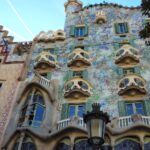 Gaudí's Masterpiece: Casa Batlló
Gaudí's Masterpiece: Casa Batlló Famous Modernist Buildings in Barcelona
Famous Modernist Buildings in BarcelonaIf you want to know other articles similar to Discover the Magnificence of Sagrada Familia: The Iconic Landmark of Barcelona, Spain! | Barcelona Turisme you can visit the category WHERE YOU CAN GO.
Leave a Reply

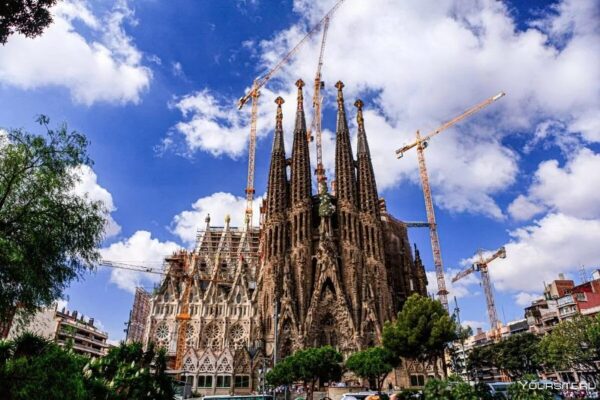
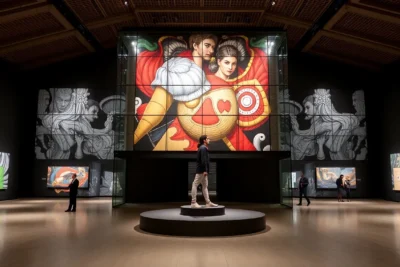
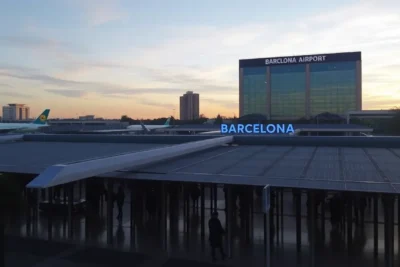

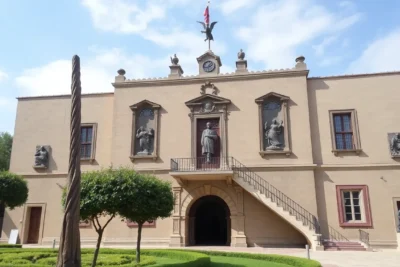

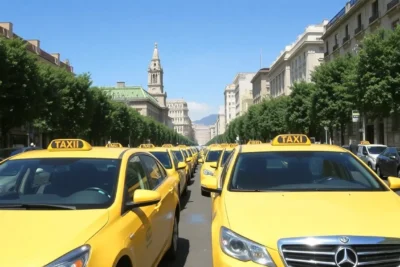
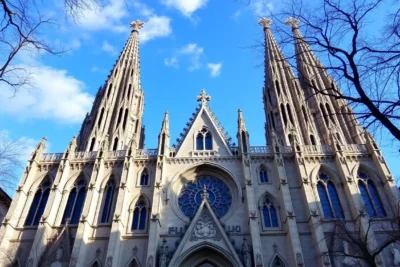

Read more!